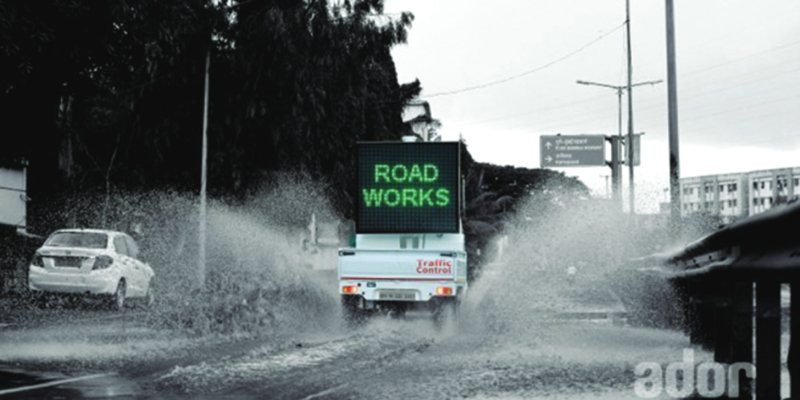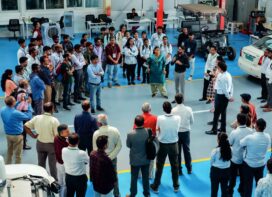
Ravin Mirchandani
Chairman, Ador Powertron Limited
variable Message Signs have been used to influence driver behaviour, create safer road spaces and also to manage traffic flows through cities for over three decades globally. As LEDs were very expensive years ago, early VMS had small text panels and were deployed in larger pitch sizes and in one colour only (Amber). Messaging needed to be from a fixed library and remote diagnostics of each VMS was cumbersome. Over time, as cost dropped and technology options ameliorated, we see a plethora of full matrix, full colour VMS installed globally.
Talking of technologies
Technologies that have made a big difference includes specific lenses for EN12966 compliance so as not to distract or blind drivers passing close by the VMS, the use of fibre and radio communications technology for rapid message changes to individual VMS and real time diagnostics to ensure VMS health is optimal.
On Indian roads while VMS still continues to be used mostly for road safety messages, today the technology installed already enables road speed zones to be dynamically altered when weather conditions term inclement or road works are undertaken, and for estimated travel times to be dynamically displayed to commuters. Today, a VMS is one tool within the entire ATMS suite that can be used by a road control room to message drivers on behaviours, travel times, road closures or dangers ahead on the road to look out for.

Using VMS effectively
VMS is not effectively used in India. Many units installed are cheaper Chinese imports with inadequate service provided to keep all LEDS firing. Also, in most locations where VMS is installed, system integrators have not been mindful of the easy access to these boards for regular service. There are no safe access stairwells, or workman platforms to the rear to allow for easy and safe, regular servicing. As a result, a man-basket is required for access to service the VMS and traffic in one lane needs to be stopped for servicing activities. Understandably, this is cumbersome and results in the VMS not being regularly serviced and which is why we see so many unused VMS boards across the country.
More importantly, we still continue to use VMS boards only for messaging on road safety (Wear Seat Belts/ Don’t Use Phone whilst driving etc). Such messaging can just as easily be achieved by a much cheaper flex panel on the side of the road. This is a very inefficient use of expensive assets. VMS should be used to dynamically indicate estimated travel time to location, to reduce speed limits in specific sections when road works or poor weather require slower speeds and to alert drivers on future road closure or of impediments ahead on the road. VMS boards that are integrated to road control rooms as part of any ATMS project are designed and can very easily be used to make the drive safer and easier for road commuters and should increasingly be used for such purposes.
A VMS sign can be installed overhead on a gantry or on the median in the centre of the road. The crucial task of a VMS is to provide safe driving information and statistics to drivers. Hence using an EN12966 compliant LED panel is imperative as the guidelines ensure that road users are not blinded by LEDs as they come closer and pass the sign, with the maximum illumination zone being a safe distance from the sign. These should be used for travel time estimation and information on road conditions – not for advertising or other related messages which are inconsequential to the road use experience.
VMS are used in static and mobile formats, both of which had very different challenges. On a mobile platform what is most important is resilience of the LEDs to vibration and also battery life. Hence it’s best to use a DIP LED board, preferable in one colour (amber) and have a high pitch of 16mm to 22mm, using only text for information across two lines. This will ensure that the battery onboard the mobile platform can last between seven to 30 days without the unit requiring recharging.
A static LED board is not susceptible to vibration and hence can use an STM based LED module. As power infrastructure is not a constraint, lower pitch sizes are also suitable. Our VMSes are installed in both static and mobile platforms across India – the largest being 12 meters across multiple lanes on a gantry.
 TrafficInfraTech Magazine Linking People Places & Progress
TrafficInfraTech Magazine Linking People Places & Progress


